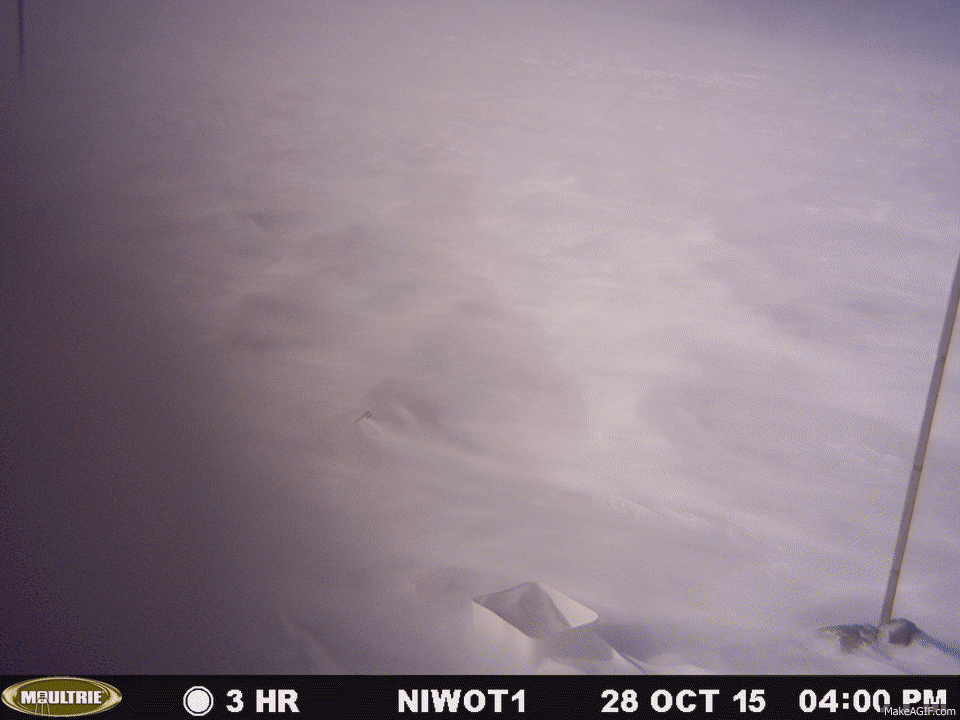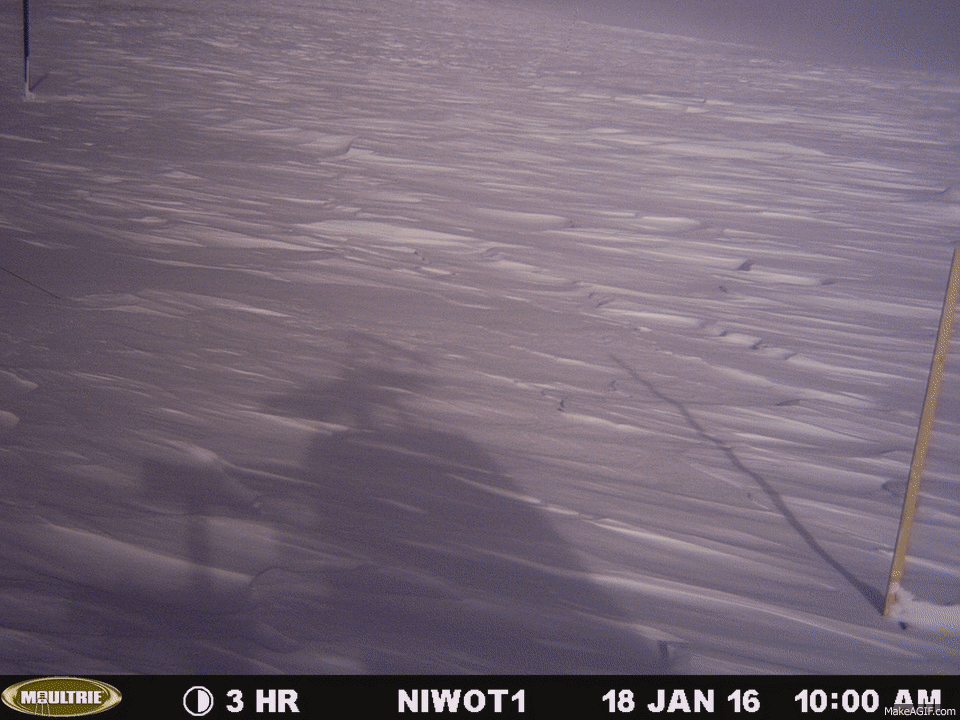I just set up my first time-lapse camera on Niwot Ridge, Colorado, with CU-undergraduate Gage Hamel.
What do we hope to capture? Fallen snow shifts like sand, and sets like cement. It forms regular features, which range from dart-like crescents to ripples, waves, and elongate sastrugi. These snow features affect the reflectivity and aerodynamic roughness of the snow, which in turn determine its temperature and melt rate.
My aim is to measure and quantitatively predict the way these features form and change in time. The first stop is to get detailed observations of a changing snow surface. The field site is Niwot Ridge, where the University of Colorado keeps a weather station and the wind carves deep sastrugi.
Below are two time-lapse videos of snow on the ridge (photos: Sarah Evans). These are examples of the textures and changes we hope to quantify.
This gif shows waves of powdered snow chasing downwind across the landscape:
In this four-day timelapse the snow edges are worn back by the wind (coming from the left). Then they set, and remain almost motionless until a new storm erases them at the start of February.
These videos show us that snow features move. I’m looking for how. My camera will take photos every few seconds. That should be enough to see perturbations grow and move over the waves.

